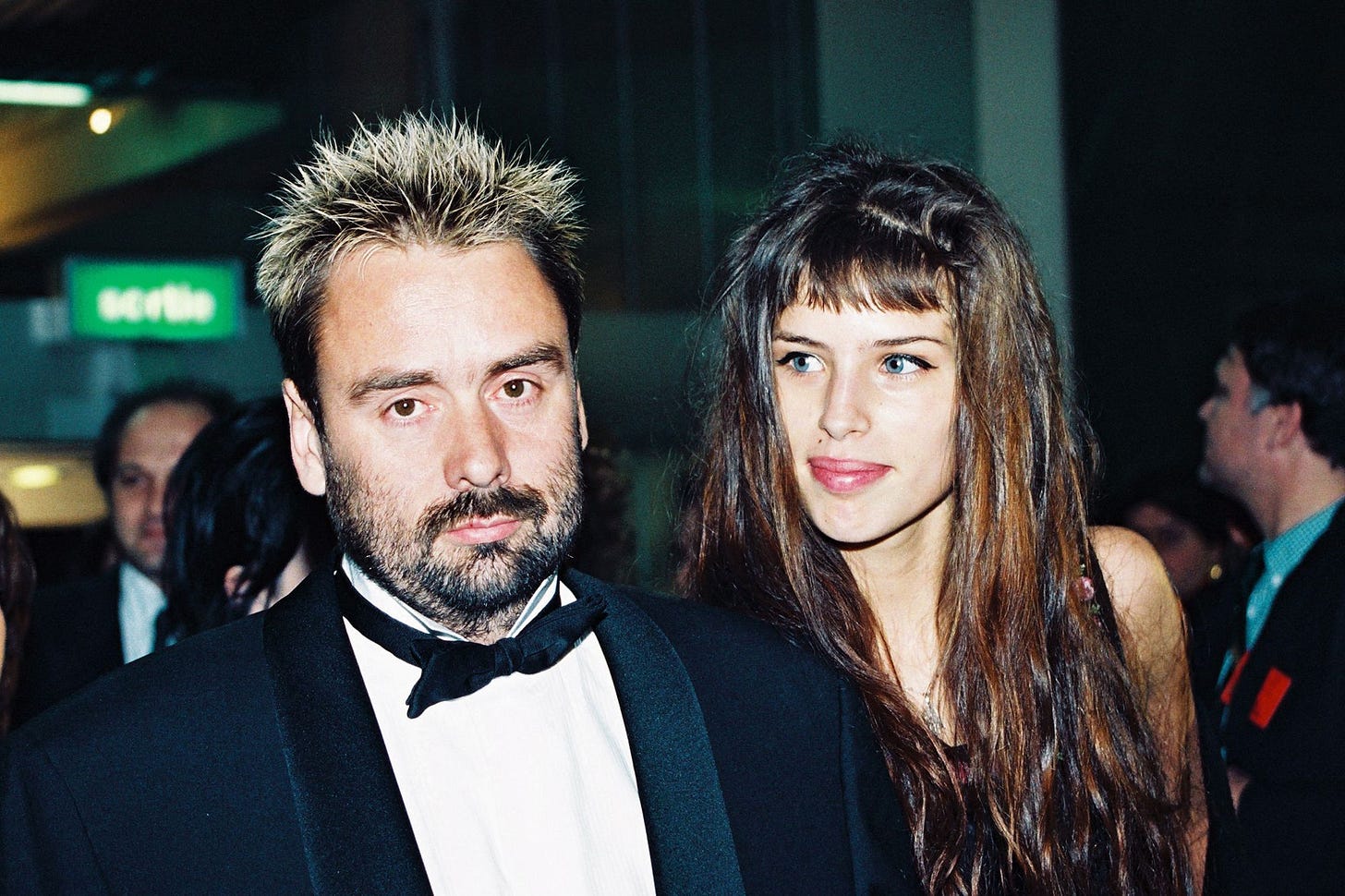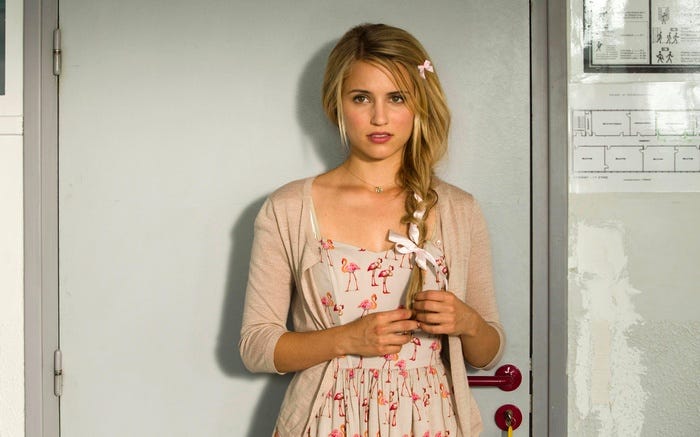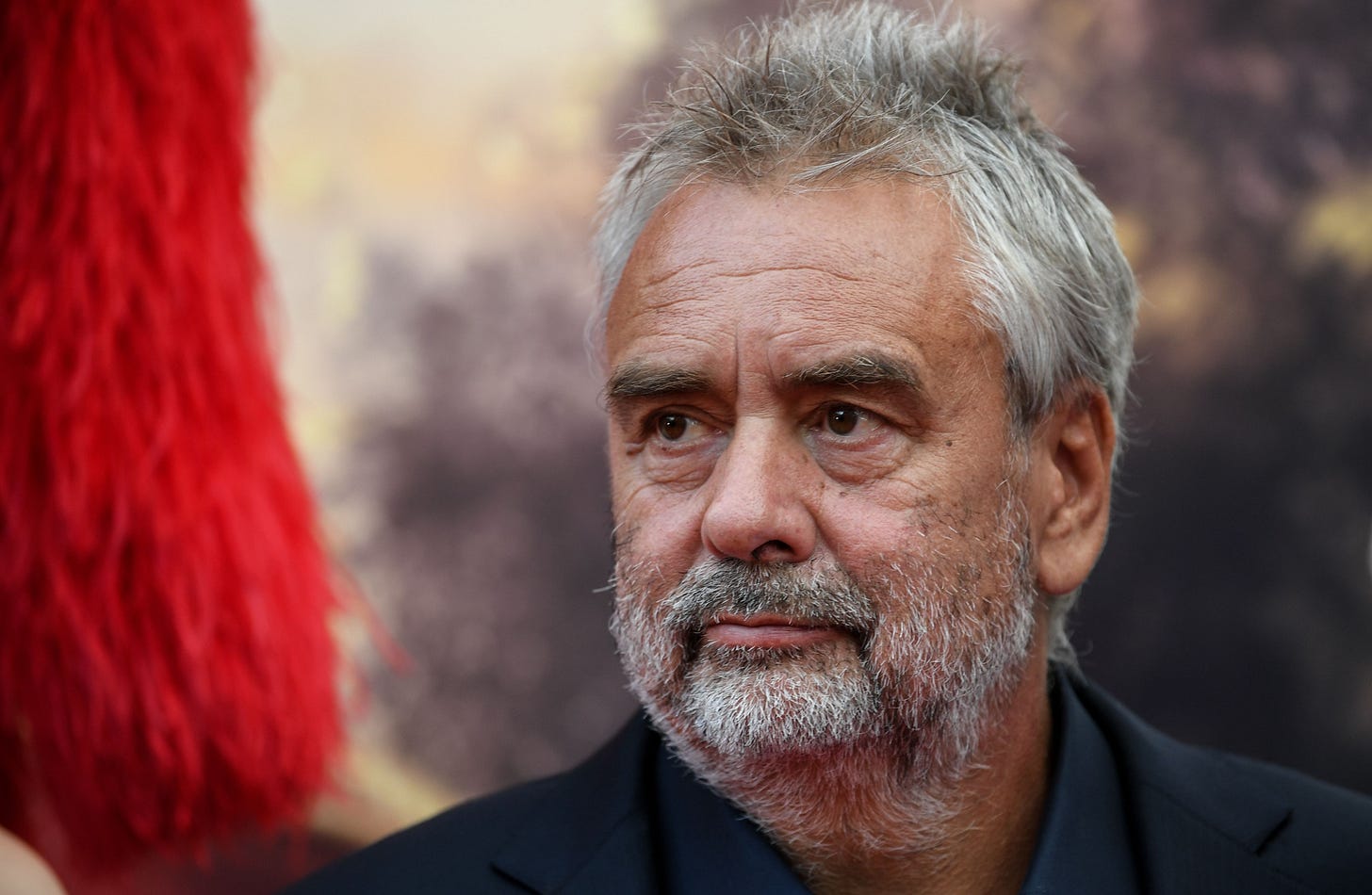There is a persistent hum beneath the fluorescent flicker of Luc Besson’s filmography — an unsettling frequency that, once heard, is impossible to unhear. It’s the sound of innocence weaponized and aestheticized, young girls filmed through a lens fogged with male desire and melodramatic stylization. It is the sound of a director constructing worlds where the child is often cast as muse, savior, soldier — and sometimes, disturbingly, as lover. Watching Besson’s work today is an exercise in retrospective unease: his cinema glows with kinetic energy and operatic scale, but it also casts long, cold shadows of suspicion.
The French “auteur” has always walked a fine line between pulp and poetry. But over time, a pattern has emerged — one that’s less about style than it is about fixation. At the center of Besson’s most emotionally charged stories lies a recurring obsession: the young girl, too wise for her age, too sexualized for her own good, and too often caught in the gravitational pull of older men.
Léon: The Professional (1994) is arguably Besson’s most iconic film, and also his most damning. On the surface, it is a hyper-stylized assassin thriller, carried by a near-mythic Jean Reno and a revelatory Natalie Portman, cast at only 11 years old. But beneath the bullet-ridden surface lies a story of questionable intimacy — one that reconfigures a hitman into a surrogate father and blurs the line between mentorship and romantic fantasy.
Portman's character, Mathilda, smokes cigarettes, applies red lipstick, and declares she is “in love” with Léon. Besson invites us to see this as tragic and maybe even pure — but the camera lingers too long, the subtext becomes text, and the emotional ambiguity collapses into something more plainly perverse. Portman herself has spoken about the legacy of the role and how it made her hyper-aware of being sexualized as a child actress. In a 2018 speech at the Women's March, she recounted receiving a "rape fantasy" letter from a fan at age 13 and hearing a radio station countdown to her 18th birthday, when she would be "legal to sleep with".
It's difficult to separate the discomfort we feel watching Léon from what we’ve since learned about Besson himself — that his eye for the precocious female form was not only cinematic, but also personal.
In interviews, French actress and director Maïwenn has spoken openly about her relationship with Besson, which began when she was 15 and he was 31, after having met 3 years earlier. She became pregnant at 16. “Luc Besson raped a 15-year-old” may be a phrase that French media continues to resist spelling out — but the timeline, confirmed by both parties, leaves little ambiguity for anyone reading between the lines.
Notably, Maïwenn has acknowledged that Leon was inspired by her relationship with Luc Besson. She stated, "When Luc Besson did Léon, the story of a 13-year-old girl in love with an older man, it was very inspired by us since it was written while our story started".
Later, he would cast her again in The Fifth Element (1997), and later still, she would tell her story through subtext and silence in her own film, Polisse (2011), a raw police procedural centered on a child protection unit. Her absence from American conversations around #MeToo is less a footnote than a signpost of how deeply buried certain stories remain — especially when they’re tangled in the sheen of prestige.
Two decades after Léon, Besson returned to the “young girl on the edge of adulthood” archetype in The Family (2013), a black comedy about a mafia clan hiding out in Normandy. Among the film’s weirder tonal choices is a subplot where Belle (Dianna Agron), a high school student, seduces her math teacher. The scene is played with the kind of confidence that makes you forget, momentarily, that it’s statutory rape.
It’s not incidental. It’s not peripheral. It’s part of a pattern: Besson repeatedly inserts teacher-student or father-figure/young girl dynamics into his work, and these are not coded as abusive or tragic — they are romanticized, even idealized. The story of Belle is not just a scene — it’s an echo to Mathilda, a projection of the same dangerous fantasy in new packaging.
This recurring motif of sexualized youth in Besson's films becomes even more unsettling when juxtaposed with real-world allegations. In 2018, Belgian-Dutch actress Sand Van Roy filed a rape complaint against Besson, accusing him of drugging and assaulting her in a hotel room. Several other women — many of them actresses — later came forward with similar allegations, including accounts of professional manipulation and coercive behavior. The cases have ricocheted through the French legal system, some dismissed, others still under appeal. Besson has denied all allegations.
But the legal process moves slower than the critical one. The question that must be asked is not simply “Is this man guilty?” but rather, “What does his body of work say about the way he sees women, youth, power, and consent?”
And what it says, if we’re honest, is disturbing.
To revisit Besson’s films now is to look through a different lens — not a purely moral one, but a critical one sharpened by time, testimony, and patterns. The stylized chaos of La Femme Nikita, the ethereal child-woman in The Fifth Element, the relentless gaze on youthful beauty and vulnerability in Angel-A and Lucy — it’s all there, laid bare and uncomfortably coherent.
In an era where the line between artist and art is being redrawn in real time, Besson’s oeuvre stands as a haunting case study in auteurism gone unchecked. His films are kinetic, imaginative, and sometimes transcendent — but they are also laced with a voyeuristic obsession that cannot be ignored.
There are many ways to tell a story, and many ways to read one. But when a director keeps returning to the same images, the same archetypes, the same troubling narratives — it stops being an accident. It becomes a calling card.
And maybe that’s what makes Besson’s cinema so chilling in retrospect: not the moments when his characters cross the line, but the feeling that the director never thought there was one.








